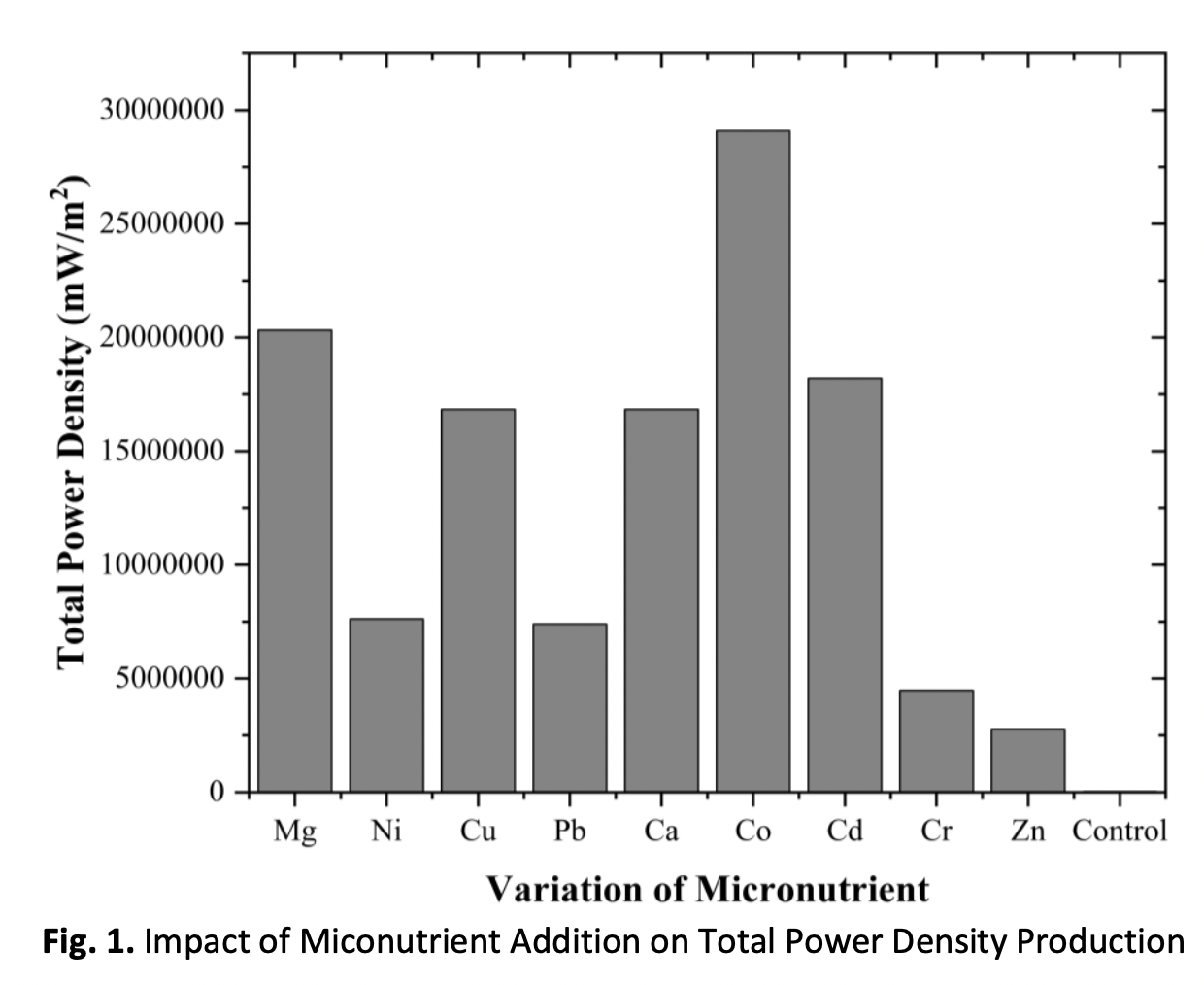MFC Performance with Additional Micronutrients in Food Waste Substrate
DOI:
https://doi.org/10.37934/arfmts.115.2.103112Keywords:
Electricity, Microbial Fuel Cell, micronutrientAbstract
Microbial Fuel Cell (MFC) are the one of utilization of waste for renewable energy continues to be developed. According to the FAO, 32% of all food for human consumption is discarded about 1.3 billion tonnes per year. In this study, Microbial Fuel Cells used an organic source in the form of food waste that had been hydrolyzed by Aspergillus oryzae, Aspergillus aculeatus, and Candida rugosa. The results of the hydrolysis are entered into the MFC system. In the MFC system it is mixed with Sidoarjo mud and Shewanella oneidensis MR-1, then put into a Single Chamber microbial fuel cell (SC-MFC) to generate electricity. In this research, also added micronutrients (Mg2+, Ni2+, Cu2+, Ca2+, Pb2+, Co2+, Cd2+, Cr2+, and Zn2+) to increase the metabolic of Shewanella oneidensis MR-1 bacteria, so can elevate electric currents. electrons and protons are produced by microorganisms by changing organic compounds in the substrate. The results showed that the best power density was 6.652 W/m2 with BOD 89.362% and COD removal 77.273% achieved with a ratio of food waste to water of 2:1 M. Food hydrolysis is capable of hydrolyzing 40% food waste into glucose within 24 hours. The greatest percentage of glucose decreased was achieved by Cobalt micronutrient addition with 77% of glucose decreased. Therefore, MFC can be greatly enhance food waste degradation to become a carbon source in a microbial fuel cell for electricity production.
Downloads






























